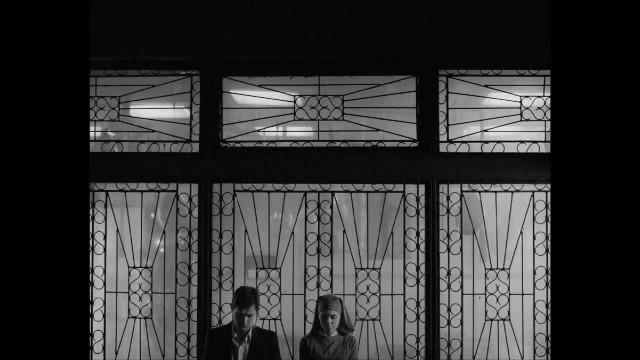Who: COIL
What: Interdisciplinary festival featuring dance, theater, music, art, and discussion, organized by PS 122
Where: Baryshnikov Arts Center, Chocolate Factory, Vineyard Theatre, Invisible Dog Art Center, the Swiss Institute, Asia Society, Parkside Lounge, New Ohio Theatre, Danspace Project, Times Square
When: January 2-17, free – $30
Why: Dancers and choreographers Molly Lieber and Eleanor Smith in Rude World; Temporary Distortion’s durational multimedia live installation My Voice Has an Echo in It; Faye Driscoll’s extraordinary, interactive Thank You for Coming: Attendance; Alexandra Bachzetsis’s Diego Velázquez-inspired From A to B via C
Who: Under the Radar Festival and Incoming!
What: Interdisciplinary festival featuring dance, theater, music, and art, organized by the Public Theater
Where: The Public Theater, 425 Lafayette St., and La MaMa, 74 East Fourth St.
When: January 7-18, free – $40
Why: Daniel Fish’s A (radically condensed and expanded) Supposedly Fun Thing I’ll Never Do Again based on audio recordings of David Foster Wallace; Marie-Caroline Hominal’s The Triumph of Fame, a one-on-one performance inspired by Petrarch’s “I Trionfi”; Taylor Mac’s A 24-Decade History of Popular Music: 1900-1950s; Toshi Reagon’s Octavia E. Butler’s Parable of the Sower: The Concert Version; Reggie Watts’s Audio Abramović, in which Watts will go eye-to-eye with individuals for five minutes
Who: American Realness
What: Interdisciplinary festival featuring dance, theater, music, art, conversation, discussion, readings, and a workshop, organized by Abrons Arts Center
Where: Abrons Arts Center, 466 Grand St.
When: January 8-18, $20
Why: World premiere of Jack Ferver’s Night Light Bright Light; Cynthia Hopkins’s A Living Documentary; Tere O’Connor’s Undersweet; Luciana Achugar’s Otro Teatro: The Pleasure Project; My Barbarian’s The Mother and Other Plays; Dynasty Handbag’s Soggy Glasses, a Homo’s Odyssey
Who: Prototype
What: Festival of opera, theater, music, and conversation
Where: HERE, St. Paul’s Chapel, La MaMa, St. Ann’s Warehouse, Park Ave. Armory, Joe’s Pub
When: January 8-17, $22-$75
Why: The Scarlet Ibis, inspired by James Hurst’s 1960 short story; Carmina Slovenica’s Toxic Psalms; Bora Yoon’s Sunken Cathedral; Ellen Reid and Amanda Jane Shark’s Winter’s Child
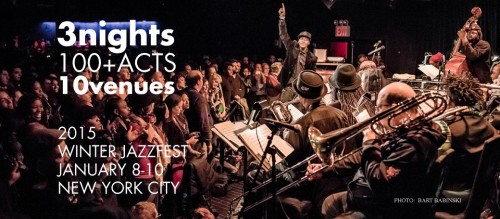
Who: Winter Jazzfest NYC
What: More than one hundred jazz groups playing multiple venues in and around Greenwich Village
Where: The Blue Note, (le) poisson rouge, Judson Church, the Bitter End, Subculture, Bowery Electric, others
When: January 8-10, $25-$145
Why: Catherine Russell, David Murray Infinity Quartet with Saul Williams, Jovan Alexandre & Collective Consciousness, Marc Ribot & the Young Philadelphians with Strings, So Percussion Feat. Man Forever, Theo Bleckmann Quartet with Ambrose Akinmusire, and David Murray Clarinet Summit with Don Byron, David Krakauer, and Hamiet Bluiett
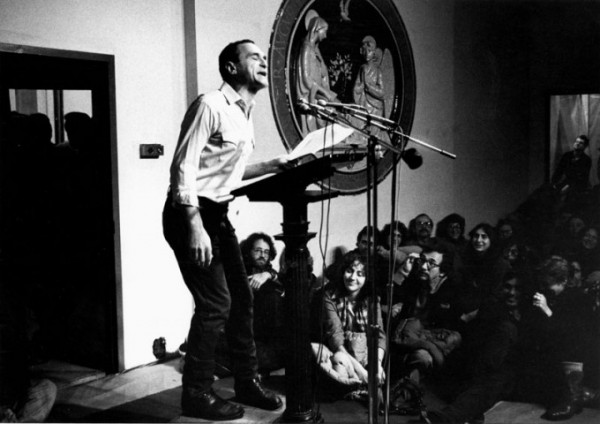
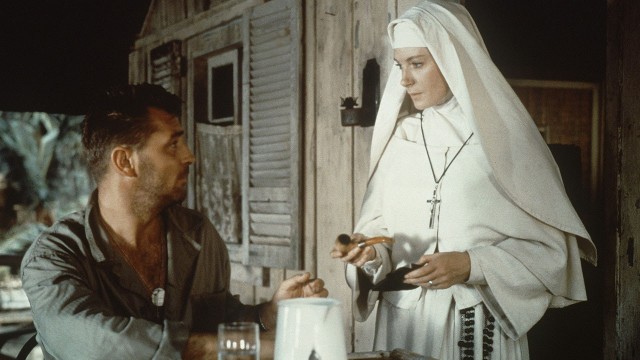
 In 1944, a marine corporal (Robert Mitchum) washes up on an island that has only one other occupant: a Catholic novitiate (Deborah Kerr) preparing to take her final vows, stranded there because of the war and the death of an aged priest. When the Japanese first bomb the island, then occupy it, the rugged Mr. Allison and the demure Sister Angela are forced to hide out together in a cave as they face both starvation and enemy capture. Adapted by director John Huston and John Lee Mahin (No Time for Sergeants, Show Boat) from Charles Shaw’s 1952 novel, Heaven Knows, Mr. Allison is a charming character study, a different kind of love story that develops within a lush, gripping Cinemascope WWII drama. Connecticut native Mitchum (Out of the Past, The Night of the Hunter), who is often shown bare-chested, and Glasgow-born Kerr (From Here to Eternity, Separate Tables), mostly hidden within her white habit (which stays remarkably clean through most of the film), are at their best as they reveal details of lives that are more similar than they initially imagine. (Kerr was nominated for an Oscar for the film, one of her six Best Actress nods, earning an honorary Academy Award in 1994, while Mitchum’s lone nomination was for Best Supporting Actor in 1945’s The Story of G.I. Joe.)
In 1944, a marine corporal (Robert Mitchum) washes up on an island that has only one other occupant: a Catholic novitiate (Deborah Kerr) preparing to take her final vows, stranded there because of the war and the death of an aged priest. When the Japanese first bomb the island, then occupy it, the rugged Mr. Allison and the demure Sister Angela are forced to hide out together in a cave as they face both starvation and enemy capture. Adapted by director John Huston and John Lee Mahin (No Time for Sergeants, Show Boat) from Charles Shaw’s 1952 novel, Heaven Knows, Mr. Allison is a charming character study, a different kind of love story that develops within a lush, gripping Cinemascope WWII drama. Connecticut native Mitchum (Out of the Past, The Night of the Hunter), who is often shown bare-chested, and Glasgow-born Kerr (From Here to Eternity, Separate Tables), mostly hidden within her white habit (which stays remarkably clean through most of the film), are at their best as they reveal details of lives that are more similar than they initially imagine. (Kerr was nominated for an Oscar for the film, one of her six Best Actress nods, earning an honorary Academy Award in 1994, while Mitchum’s lone nomination was for Best Supporting Actor in 1945’s The Story of G.I. Joe.)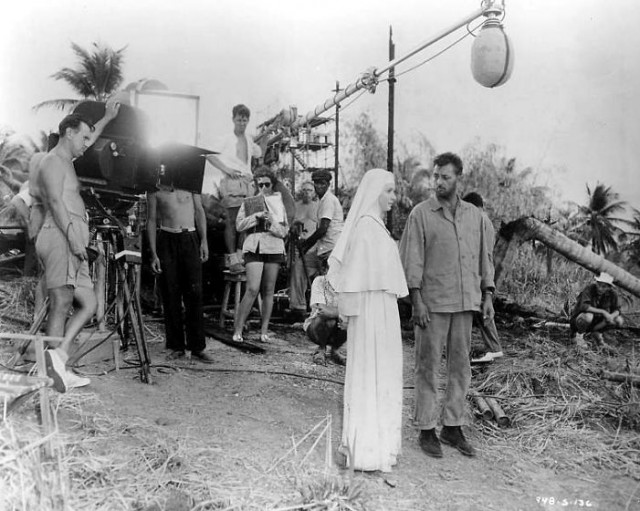
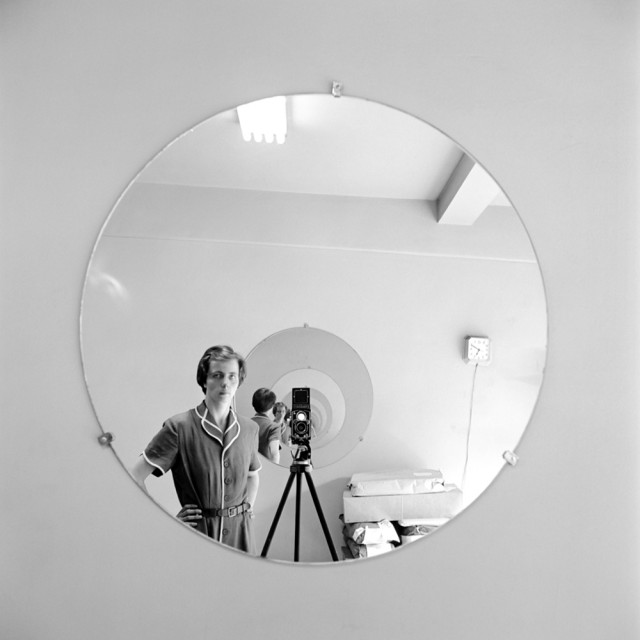
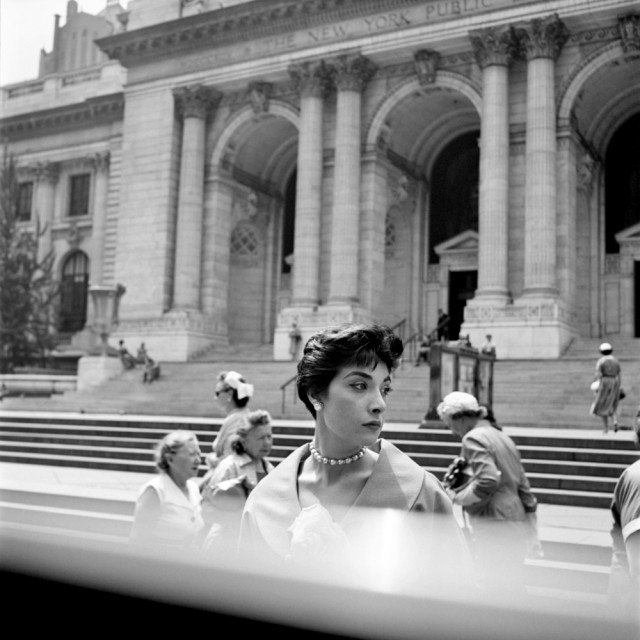

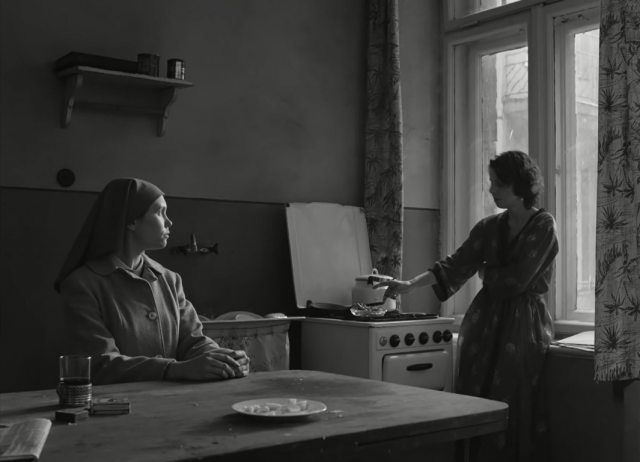
 Paweł Pawlikowski’s Ida is one of the most gorgeously photographed, beautifully told films of the young century. The international festival favorite and shortlisted Foreign Language Oscar contender is set in Poland in 1962, as eighteen-year-old novitiate Anna (Agata Trzebuchowska) is preparing to become a nun and dedicate her life to Christ. But the Mother Superior (Halina Skoczyńska) tells Anna, an orphan who was raised in the convent, that she actually has a living relative, an aunt whom she should visit before taking her vows. So Anna sets off by herself to see her aunt Wanda (Agata Kulesza), a drinking, smoking, sexually promiscuous, and deeply bitter woman who explains to Ida that her real name is Ida Lebenstein and that she is in fact Jewish — and then reveals what happened to her family. Soon Ida, Wanda, and hitchhiking jazz saxophonist Dawid Ogrodnik are on their way to discovering some unsettling truths about the past.
Paweł Pawlikowski’s Ida is one of the most gorgeously photographed, beautifully told films of the young century. The international festival favorite and shortlisted Foreign Language Oscar contender is set in Poland in 1962, as eighteen-year-old novitiate Anna (Agata Trzebuchowska) is preparing to become a nun and dedicate her life to Christ. But the Mother Superior (Halina Skoczyńska) tells Anna, an orphan who was raised in the convent, that she actually has a living relative, an aunt whom she should visit before taking her vows. So Anna sets off by herself to see her aunt Wanda (Agata Kulesza), a drinking, smoking, sexually promiscuous, and deeply bitter woman who explains to Ida that her real name is Ida Lebenstein and that she is in fact Jewish — and then reveals what happened to her family. Soon Ida, Wanda, and hitchhiking jazz saxophonist Dawid Ogrodnik are on their way to discovering some unsettling truths about the past.